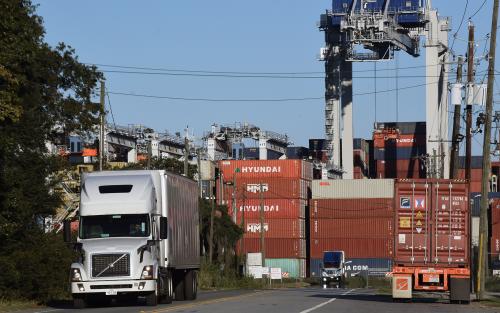This report was presented at the ASSA 2020 Annual Meeting for the session Sources of the Transatlantic Productivity Slowdown.
Economic growth provides broad and substantial benefits. When growth is strong, household incomes rise, and wages increase; it becomes much easier to balance budgets and to meet the needs of the poorest members of society. Overall economic growth does not guarantee that everyone in an economy will be better off, but it helps.
Strong economic growth, in turn, comes from two sources, the growth in the workforce and the growth in output per worker (that is, labor productivity). The demographic trend in advanced economies has been towards lower birth rates leading to slower growth in the population and in the labor force, with the population aging as its growth slows. Immigration can supplement the growth of the domestic population, but this can generate social stresses and political problems. In the advanced economies, labor force growth is much slower than in past, particularly in Japan but also in Germany and the United States, with a negative impact on the rate of increase of national incomes.
With slower labor force growth, that leaves productivity as the main driver of overall economic growth and, unfortunately, it too has slowed. Figure 1 shows the pattern of trend growth in output per employed person as calculated by the Conference Board for the United States, Japan, Europe, and the World Total. Productivity growth in the United States has been slow since the early 1970s, except for a period in the late 1990s and early 2000s. Japan and Germany had much faster growth in the 1970s, but their growth rates have declined sharply since then. With the slowing of growth in China, the trend of growth in the index for the total world economy has also slowed.
The pattern of productivity growth in the three largest mature economies, the United States, Japan, and Germany, is the focus of this project. There have been many efforts to understand why growth has been so slow in recent years, and while there is some suggestive and interesting evidence of what factors may be at work, there is no consensus explanation for the pattern of slow growth that is widespread both by country and by industry (Baily and Montalbano 2016). This project will examine data on productivity growth in the three economies, looking at the aggregate, economy-wide data and at different industries. Data on the growth of labor and total factor productivity are available, plus estimates of the comparative levels of productivity in the three economies. These data can cast light on the nature of the productivity growth slowdown and may help disentangle its causes. Although these results can guide policy measures that are designed to improve the rate of growth of productivity, there is no guarantee the causes of the slowdown will be uncovered.







